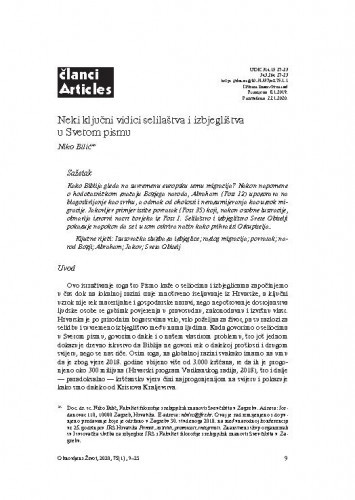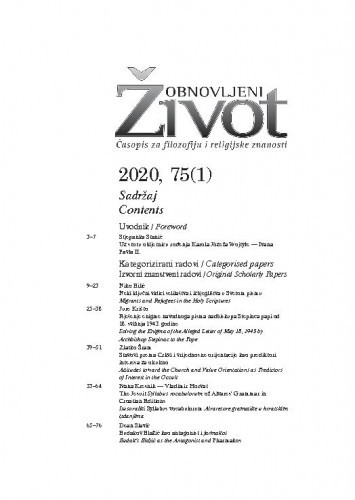Kako Biblija gleda na suvremenu europsku temu migracija? Nakon napomene o hodočasničkom značaju Božjega naroda, Abraham (Post 12) upozorava na blagoslivljanje kao svrhu, a odmak od oholosti i nerazumijevanja kao uzrok migracije. Jakovljev primjer ističe povratak (Post 35) koji, nakon osobne lustracije, obnavlja izvorni nacrt čovjeka iz Post 1. Selilaštvo i izbjeglištvo Svete Obitelji pokazuje napokon da se i u tom otkriva način kako prihvatiti Otkupitelja..; In exploring the biblical approach to the issue of migrants and refugees, this paper first ascertains that the character of the People of God is that of the pilgrim. The examples of Abraham (Gen. 12) and St. Joseph in the New Testament point out the need for spiritual discernment in recognizing a genuine call from God. Thus, the purpose of the migration is to bring blessings to the peoples, and the cause of the migration is the need to leave behind pride and misunderstanding, the biblical tower of Babel. The path of migration taken by Jacob renders his return essential (Gen. 35). His migration is explained as a personal purification process, conversion and reconciliation with God and his brother Esau, which enables Jacob to adopt the original concept from Genesis 1 as God’s creation. The Holy Family in the role of the migrant family highlights the task of the father and his need to protect his family. Their experience ensures that migration is one possible way to accept the Redeemer and to follow in his path.
Sažetak

 Obnovljeni život : časopis za religioznu kulturu : 75, 1(2020) / glavni urednik Tadija Milikić.
Obnovljeni život : časopis za religioznu kulturu : 75, 1(2020) / glavni urednik Tadija Milikić.